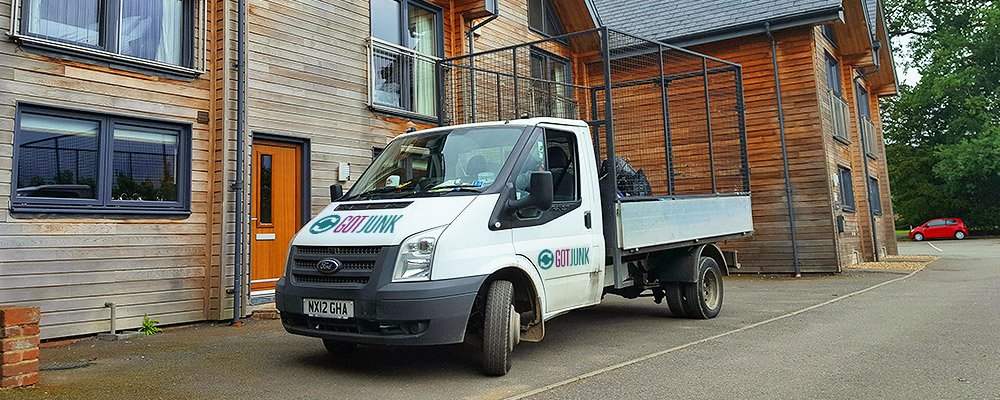Wood Waste Repurposing Techniques
Posted on 14/04/2025
Wood waste is increasingly becoming a significant environmental concern, but it also presents a tremendous opportunity for sustainable practices. Repurposing wood waste can not only mitigate environmental harm but also provide economic benefits by transforming waste into valuable materials. In this article, we will explore various wood waste repurposing techniques that are gaining traction worldwide.
Understanding Wood Waste
Wood waste is generated from various activities, including construction, demolition, manufacturing, and even household activities. This waste can include sawdust, wood chips, offcuts, and even whole unusable pieces of lumber. Effective management of this waste is essential to reduce landfill use, lower carbon emissions, and promote sustainable resource management.

Common Wood Waste Repurposing Techniques
1. Recycling
Recycling wood waste involves breaking down the material into its core components so that it can be reused in new products. This process usually involves grinding down the wood into sawdust or chips, which can then be used in manufacturing particleboards, paper, and mulch.
Many recycling facilities have begun to specialize in wood waste, offering services that collect and process this material into reusable forms. Some innovative companies are even using wood waste to develop new materials, such as bio-composite boards that are stronger and more sustainable than traditional options.
2. Upcycling
Upcycling is the process of transforming waste materials into new, higher-value products. This technique is particularly popular in the artisan and DIY communities. Old wooden pallets, for example, can be upcycled into furniture, garden planters, and even home decor items. The goal is to add value through creativity and craftsmanship rather than merely disposing of the waste.
Many businesses have adopted upcycling as a core part of their operations. Retailers that sell upcycled wood products often highlight the unique characteristics and sustainability of their items, appealing to consumers looking for eco-friendly options.
Innovative Technologies in Wood Waste Repurposing
3. Pyrolysis
Pyrolysis is a high-temperature process that breaks down organic material in the absence of oxygen. When applied to wood waste, pyrolysis produces biochar, a carbon-rich product that can be used as a soil amendment to improve soil health and sequester carbon. Additionally, pyrolysis can generate syngas and bio-oil, which can be used as renewable energy sources.
This technology offers a closed-loop system where waste is transformed into products that benefit agriculture and energy sectors. Several municipalities and companies are investing in pyrolysis plants to manage their wood waste sustainably.
4. Gasification
Gasification is another high-temperature process that converts wood waste into syngas, a mixture of hydrogen, carbon monoxide, and other gases. This syngas can be used to generate electricity, produce heat, or even manufacture chemicals and fuels. The key advantage of gasification is its ability to handle various types of wood waste, making it a versatile solution.
The technology is seeing increased adoption in both industrial and municipal settings, where it helps to reduce waste while generating renewable energy. Gasification plants are particularly appealing because they can be integrated with existing infrastructure, such as power plants, to enhance their sustainability.
Regenerative Uses of Wood Waste
5. Composting
Wood waste, especially sawdust and wood chips, can be composted to create nutrient-rich soil amendments. This compost can be used in agriculture, landscaping, and gardening to improve soil structure, water retention, and nutrient availability. Wood composting requires careful management to balance the carbon-to-nitrogen ratio, ensuring efficient decomposition.
This practice not only diverts waste from landfills but also supports sustainable agriculture by enhancing soil health. Many farmers and gardeners are adopting wood composting to improve their yields and reduce their dependence on chemical fertilizers.
6. Biodiversity Enhancement
Wood waste can also be repurposed to enhance biodiversity in natural habitats. For example, wood logs and branches can create habitat structures for wildlife, such as birdhouses, bat boxes, and artificial reefs. These structures provide shelter and breeding grounds, supporting various species and contributing to ecosystem resilience.
Conservation organizations and environmental agencies often collaborate on projects that repurpose wood waste for habitat enhancement. These initiatives not only benefit wildlife but also engage communities in conservation efforts.

Economic and Environmental Benefits
The economic and environmental benefits of repurposing wood waste are substantial. By converting waste into valuable products, businesses can reduce disposal costs and create new revenue streams. Additionally, repurposing wood waste helps conserve natural resources, reduce greenhouse gas emissions, and promote a circular economy.
For municipalities, implementing wood waste repurposing programs can reduce landfill use and associated costs. These programs also create jobs and stimulate local economies by supporting industries that rely on recycled and upcycled materials.
Conclusion
The repurposing of wood waste presents a viable solution to some of the environmental challenges we face today. From recycling and upcycling to innovative technologies like pyrolysis and gasification, various techniques can effectively manage and transform wood waste into valuable products. Regenerative uses such as composting and biodiversity enhancement further demonstrate the versatility and potential of wood waste repurposing.
As industries, municipalities, and individuals adopt these practices, we can expect significant economic and environmental benefits. By embracing sustainable approaches to wood waste management, we can move towards a more circular and sustainable economy, ultimately protecting our planet for future generations.
In summary, the repurposing of wood waste is not just a necessity but an opportunity. It is an essential step towards more sustainable living and offers immense benefits that can be leveraged by various sectors. The potential of wood waste repurposing is vast, and its adoption is crucial for a sustainable future.





